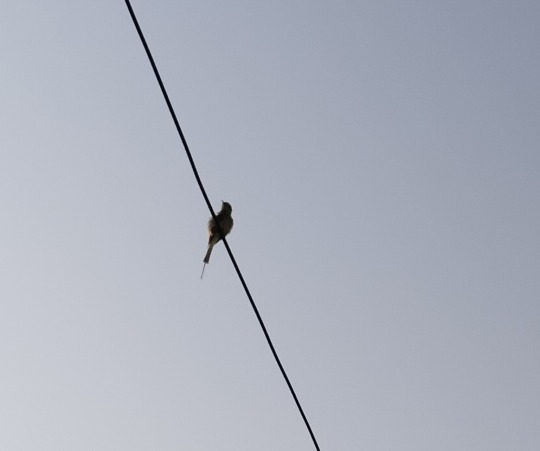#art_history
Explore tagged Tumblr posts
Text

Caspar David Friedrich
#landscape #landscapepainting #romantic
#Art #painting #Art_history
0 notes
Text

Interior Passage in the Colosseum (1825) - by François Diday.
#art🎨#kunst#art_history#paintingart#paintinglovers#paintingoftheday🎨#famouspainting#historicalart#historiadelarte#artencyclopedia#colosseum
165 notes
·
View notes
Text
A few still lifes in art history
I start this very sketchy selection of still-life paintings by showing the great blue color shades which Cézanne used along with its light effects on the items shown on painting. A simply but centrally focused blue vase catches our attention (what about those apples?)

Paul Cézanne Le vase bleu, c.1889, oil on canvas, 61,2 x. 50,0 cm. Musée d'Orsay, Paris
Realism in Caravaggio’s basket of fruit work was against what most classical art pundits thought: any nature object should be idealized, therefore the “mission” of the artist was to re-focus or make perfect that what was seen otherwise.

Caravaggio, Basket of Fruit, c.1598-1601. Oil on canvas, Pinacoteca Ambrosiana, Milan.
We are in the presence of Memling and his painting which, by the way, was one of the first independent still lifes known in art. Rife with religious symbolism this maiolica jug is an astounding example of one of Delft’s most vigorous businesses: Faience earthenware craftsmanship.

Hans Memling’s Flowers in a Jug, c 1485. Oil on panel. 29.2 x 22.5 cm. Museo Nacional Thyssen-Bornemisza, Madrid.
And in no. 4, again, Cézanne and his Dahlias dans un grand vase de Delft (c.1873.) 73 x 54 cm, Musée d’Orsay, we can also admire a Delft pottery vase, which were fashionable in the Netherlands.

Renoir’s Still Life with Flowers and Fruit (c.1889) (99,7 x 140,3 cm) Philadelphia Museum of Art is a wonderful instance of his richness and exuberance of color.

Willen Kalf’s Still Life with Porcelain Jug. 1653 Alte Pinakothek, Munich. Still lifes (glasses, silver cups, porcelain, vases, jugs, cutlery…) as seen something characteristic of the Netherlands’ golden seventeenth century.

Henri Matisse’s Vase of Sunflowers, c.1899. Oil on canvas, 46 x 38 cm. Hermitage, Russia. Sunflowers motif, most likely Van Gogh’s influence.

Finally, to round off this selection I have chosen Ambrosius Bosschaert the Elder’s Bouquet in an Arched Window, 1620. Oil on wood, Mauritshuis, The Hague. A painter known for his taste for displaying colorful flower vases in preparatory watercolors.

#nature_morte#stilllife#art_history#storiadellarte#kunstgeschichte#museum_lovers#art_lovers#naturaleza_muerta
2 notes
·
View notes
Text

Once 1 courageously say, and a thousand safely repeat, that “Merde d’Artist” is gold, merde d’artist is gold! Until then, merde d’artist is merde.
0 notes
Text
A Rhetoric on Art
© Author of the blog, Title – On the border of Art and Art history, 11.12.22 Dear Reader, Kindly remove the burden of correctness, rationale and logic at the start of this piece. The discussion here is a purely personal opinion and nothing more or nothing less. For the past year, the theories of literary criticism, evaluation in art history and the nature of aesthetics has recurred in my…

View On WordPress
0 notes
Photo

TIZIANA PERS Art_History/ Municeddhe: le dormienti Tiziana Pers si pone il problema se sia possibile assegnare un valore economico a un essere vivente e, analogamente, ad un’opera d’arte.
0 notes
Link
0 notes
Link
Utagawa Yoshitora’s 1866 prints, “Igirisukoku Rondon no zu,” form a triptych view of London. Together, the three images depict a street scene near the River Thames, complete with thronging English pedestrians, two sailing ships, horses, oxen, and carriages. - This is an awesome woodblock print with a fascinating story. Also, a really great Ukiyo-e search: http://ukiyo-e.org/
0 notes
Text
Dürer and Insbruck Castle

Courtyard of Innsbruck Castle to the south (and north!) c. 1495. Watercolour on paper, 335 x 267 mm. Graphische Sammlung Albertina, Vienna. Albrecht Dürer (1471-1528 Nürnberg) A magnificent watercolour depicting a great castle courtyard in the Tyrol which takes us back to the time of the filming set of Nosferatu…! Great medieval architectural landscape which, supposedly, was created by the German painter during his first journey to Venice. A really hot Friday afternoon in Malaga...! Jesús Lorenzo Vieites

#dürer#alberto_durero#german_renaissance#high_renaissance#art_history#kunstgeschichte#albertina#vienna#landscape_painting
1 note
·
View note
Photo

Tiziana Pers. Art_History/ Donnalucata Tiziana Pers ha concentrato la sua ricerca sui temi del biocentrismo e dei parallelismi tra specismo, razzismo, colonialismo e sessismo con occhio particolare rivolto agli animali.
0 notes
Link
0 notes
Video
youtube
How Art Works? by Tymek Borowski and Pawel Sysiak. I really recommend you take twelve minutes to watch this to the end. Art desperately needs a resurgence of 'coarse', earnest artists. Forty years of evolution of the least common denominators between conceptualism, the postmodernist outlook of history, the liberal markets and the academic tradition led to a vicious cycle of non-stop bullshitting in the art world, which fed both the speculators and the dandies who brought about the twin curses of 'creative industries' and hipsterism - which in turn eventually led to this guy. So let's "try to communicate as simply and directly as possible, even if it sounds stupid."
5 notes
·
View notes
Text
Dance at Bougival

Once again, and it getting sort of customary, I bring to your attention a work by an Impressionist master who, obviously has nothing to do with the Old Masters series (unless if we consider his extensive travelling during the 80s that helped him to move from Impressionist towards a type of Renaissance styled naturalism focussed on his sketches) in my Instagram account; anyway, I chose it to…
View On WordPress
1 note
·
View note
Text
Dürer’s Praying Hands

Dürer's Praying Hands (Betende Hände) for a Sunday morning. Watercolour and gouache on green paper. Albertina, Graphic and Art's Collection. Vienna. Art for art's sake Jesús Lorenzo Vieites #albrecht_dürer #durero #dürer #northern_renaissance #german_renaissance #vienna #watercolour #kunstgeschichte #arthistory
#albrecht_dürer#durero#northern_renaissance#german_renaissance#artlovers#art_history#watercolour#albertina#kunstgeschichte#wien#vienna#museum_goers#oldmasters_jlvieites
0 notes